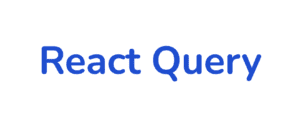Are you finding a reliable solution for managing data in your React application? If so, React Query and Apollo Client are two potent libraries that grant programmers the ability to retrieve, store in cache memory, and automatically refresh data. Both offer inspiring features but have subtle differences which can determine which is more fitting for your job.
In this post, we will closely examine the intricacies of React Query vs Apollo. We’ll uncover their features, performance levels, and different use cases so that you can make a well-informed decision about which one is best for your project requirements. Additionally, I will discuss some key factors to consider when determining between them. Let’s begin our journey!
Basics of React Query

Let’s get started by taking a look at React Query. It is an agile library that allows you to quickly retrieve, store and refresh data in your React application with ease. Its easy-to-use API combined with its reactive programming design equips components with the power of real-time data updates; this way, you can easily create lightning-fast applications without worrying about lags or delays when it comes to managing changes within the app itself.
React Query is an essential tool that can revolutionize the way you handle data. It will automatically local cache your queries, meaning it’ll first check to see if the information you need is already available and only make a network request when necessary. This reduces load times and makes for a much smoother experience. Plus, React Query updates its cache with new data as soon as it arrives so there’s no waiting around – just fast responses.
React Query simplifies and streamlines the development process with its built-in pagination, refetching, and error-handling support. It’s easy to traverse through vast datasets or refresh data that has been altered. Plus you can easily manage any errors that occur during a request thanks to React Query’s user-friendly API for updating data with mutations. So, your app remains in sync with the server at all times.
React Query is an invaluable asset for managing data in a React application, especially when working with REST APIs. Its simple API and reactive programming model make setup easy and its caching & loading management features can drastically improve your app’s performance. Overall, this powerful tool allows you to optimize efficiently whilst enabling the best possible user experience.
Basics of Apollo Client
 Let’s explore Apollo Client, a full-featured GraphQL client that can handle data retrieval and caching, local state handling, and mutations. This powerful yet flexible API makes it an excellent choice for any GraphQL server – not just the Apollo Server.
Let’s explore Apollo Client, a full-featured GraphQL client that can handle data retrieval and caching, local state handling, and mutations. This powerful yet flexible API makes it an excellent choice for any GraphQL server – not just the Apollo Server.
Apollo Client is the go-to solution for caching data and managing loading states in a similar fashion to React Query. Whenever a query fires, Apollo will check its local cache first to see if the information already exists – if so, it’ll be relayed immediately without any network request. If not, then only then will Apollo make one; when the response comes back from that call, it’s quickly stored in memory as well. This way your app stays performant by cutting down on unnecessary requests and boosting speed whenever possible.
Apollo Client features much more than just caching and loading management capabilities. It boasts a comprehensive system to manage local state, particularly advantageous in large applications. Its API for mutations is also flexible, allowing you to quickly sync data between the server and the cache with each new update.
Apollo Client is a highly beneficial tool for handling data in React applications, particularly if you are using GraphQL. Its feature-filled API and compatibility with any type of GraphQL server make it an ideal selection for many projects.
Now that we understand the core fundamentals of both React Query and Apollo Client, let’s dive deeper into their respective advantages and disadvantages to determine which suits your requirements better.
Pros and Cons of React Query
Pros
- Simple, straightforward API: React Query is a stellar option for small and medium teams, thanks to its simple and uncomplicated API. It’s easy to learn and use; getting up and running with React Query won’t take too long at all.
- Reactive programming model: React Query unlocks the power of reactive programming to create fast, responsive applications. With its model, components are capable of automatically re-rendering whenever data changes – keeping your app current with real-time information alterations.
- Built-in support for pagination, refetching, and error handling: React Query is designed to optimize your production time and effort – with built-in features such as pagination, refetching, and error handling. You won’t have to waste any of your valuable resources manually writing functions for these tasks again.
- Lightweight and performant: React Query is a blazingly fast and lightweight library that makes it perfect for small projects or teams who don’t require the complete capacity of an extensive tool like Apollo Client. With React Query, you can count on ultimate performance with minimal effort.
Cons
- Limited GraphQL support: React Query is tailored to help you work with REST APIs, so if your business runs on GraphQL technology, it probably isn’t the right fit.
- Limited feature set: Although React Query has a hassle-free API and some noteworthy features, it may not offer the same comprehensive range of operations as libraries like Apollo Client.
- Smaller community: When tackling a project, React Query’s modest-sized community might make it challenging to locate support or assets compared to other popular data management libraries.
Pros and Cons of Apollo Client
Pros
- Full-featured GraphQL client: Apollo Client is the ultimate GraphQL client, providing everything you need to easily connect with any GraphQL server. From fetching and caching data to managing local state and executing mutations, Apollo Client has a powerful yet flexible API that allows for seamless integration within your application.
- Flexible API for handling mutations: By leveraging Apollo Client’s versatile API for mutation management, you can keep your application up-to-date with the server and guarantee that modifications are seen instantly. This makes it simpler to maintain synchronization between your program and the backend, and guard against any discrepancies in data sets.
- Robust system for managing local state: With the expansive Apollo Client system for managing local state, creating complex and large-scale applications is made much easier. This handy tool grants you the ability to observe your application’s current status while also giving you the capability of adjusting it as needed.
- Widely used and well-supported: Apollo Client is a preferred library due to its comprehensive documentation, supportive community, and dependability. For bigger projects specifically, these qualities are often invaluable as they provide you with the resources and backing when encountering roadblocks or difficulties.
Cons
- Limited to GraphQL: If you’re developing a REST API, Apollo Client might not be the ideal choice; it’s specifically designed for GraphQL.
- More complex API: Although Apollo Client comes with a feature-filled and adjustable API, utilizing it may pose as more of an investment in terms of time for learning and setting up compared to simpler alternatives such as React Query.
- Less performance: If you are working on a smaller project or if performance is of utmost importance, Apollo Client may not be your best option due to its potential lack of optimal performance. In comparison with React Query, this library boasts more features but comes at the cost of efficiency in certain scenarios.
Comparing React Query vs Apollo Client
When deciding between React Query and Apollo Client, it’s essential to understand the differences in order to select the best fit for your needs.
React Query specializes in working with REST APIs while Apollo Client is a comprehensive GraphQL client that can be used on any GraphQL server. Therefore, if you plan on using GraphQL then opt for the more robust and adaptable option of Apollo Client. However, if you are sticking with a REST API but don’t require all the features of Apache Client, then consider selecting the simpler option – React Query due to its user-friendly and lightweight interface.
React Query is the perfect fit for small and medium teams thanks to its user-friendly API that makes it simple to learn. Apollo Client, on the other hand, provides a much more powerful and flexible option that might require some additional setup time – but this complexity allows you to tackle a broader range of tasks with confidence.
Additionally, it’s essential to consider the level of assistance and documentation available for each library. Despite having commendable documentation and a supportive community, Apollo Client is still more established than React Query; making it the preferred choice for bigger undertakings.
When it comes to picking between React Query and Apollo Client for your application, the decision ultimately depends on you. Both libraries offer outstanding data management solutions in a React app; whichever one you choose will ensure that your product is powerful and easily expandable.
Now let’s take a look at the use cases of each option.
Use Cases for React Query
Working with REST APIs
React Query is a perfect choice when constructing a React application that utilizes data from REST APIs. Its easy-to-use API and integrated pagination, refetching, and error-handling features make it effortless to work with REST APIs while making your app fast-loading and responsive.
Applications that need fast, real-time data updates
React Query’s reactive programming model means that components automatically re-render when the data they depend on changes. This can be especially useful for applications that need to display real-time data, as it allows you to easily update the UI as data changes.
Small and medium projects
React Query makes it incredibly convenient and hassle-free to get your project up and running quickly. Its minimalistic API and lightweight design make it the perfect choice for small or medium projects where resources may be limited, making Apollo Client an overkill solution. If you need something that can help you save time while still providing powerful features, React Query is what you’re looking for.
Use Cases for Apollo Client
Working with GraphQL
If you’re looking to create a React application that consumes data from a GraphQL server, Apollo Client is your go-to solution. Offering an impressive array of features, its powerful and flexible API makes executing queries and mutations easy. Moreover, its ability to handle local state management as well as real-time updates makes it perfect for anyone working with GraphQL.
Applications that need real-time data updates
Apollo Client’s support for instant updates, together with its management of the local state makes it an ideal choice for applications requiring real-time data or intricate modifications. Its flexible API permits you to quickly refresh the UI as information alters, guaranteeing that your application is ever timely and presentable.
Larger projects or teams
Apollo Client’s advanced API and compatibility with any GraphQL server make it the perfect choice for larger projects or teams that require a more extensive solution to manage data. If your project is on a bigger scale or you’re able to take advantage of extra resources, Apollo Client can be an incredibly valuable tool in building sophisticated, expansive applications.
Conclusion
In summary, React Query and Apollo Client are tremendous options for data management in a React application. While Apollo Client is a complete GraphQL client solution that can be used with any GraphQL server, React Query provides a lightweight but highly functional alternative specifically designed to work effectively with REST APIs.
When selecting between the two, you need to think through your individual needs and tastes. React Query may be the superior option if you’re dealing with a REST API and don’t require Apollo Client’s full capabilities, as it has an easy-to-use interface and lightweight footprint. Alternatively, if GraphQL is necessary or more advanced features are desired, Apollo Client might better suit your requirements.
Ultimately, the decision between React Query and Apollo Client is dependent on your project’s requirements and preferences. Both libraries provide the capability to construct quick, dynamic applications that will benefit any data management set-up. So go with whatever meets your needs in the best way possible!
You might find it helpful to read comparisons of:
Getting acquainted with the advantages and disadvantages of each library will give you a deeper insight into which one is better suited for your needs. This way, you can make an educated decision about what to use.


react-query can do it all (also graphql or any other requests), while vice versa is not the case for apollo.
react query much more well thought solution and just simply better docs, APIs etc.